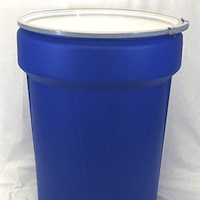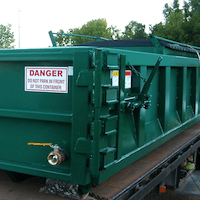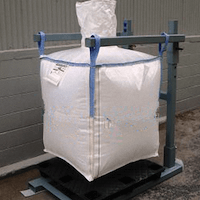
Steel Drums are all about GREEN
Recognized worldwide as the leading package used for transporting liquids and solids, steel drums are not new to the world of industrial packaging. In fact, steel drums are one of the most recognizable types of packaging that fulfill GREEN initiatives. In addition to being the most widely used package for liquid and solid shipments, it also is the packaging type that is most used for global hazardous material shipments. The steel drum is one of the few packagings that has a “maiden voyage”, then depending on the metal thickness, can be reconditioned for another 3-7 more “trips,” and eventually the exhausted packaging can be 100% recycled. This means that a single steel drum can serve as many as 4-8 shipments of product before being sold for scrap!
It’s important to point out that the number of reconditioning lives of the drum is a function of the top, bottom and body wall metal thickness. While many drum manufacturers choose to reduce the metal thickness to reduce the initial raw material cost, this also substantially reduces the number of “trips,” the drum will make before recycling. Hence, the small initial savings might, initially, reduce the cost of packaging, but it also increases the RISK of a packaging breach. Unlike other packagings that have only a single life, or that are “recycleable” but not reusable, the steel drum qualifies for the GREEN objectives by using our natural resources more efficiently and encouraging reuse and recycling of industrial packaging.
Downstream Liability: Myths versus Reality
Some persons in corporate management believe that outsourcing the corporate transportation function will help to insulate the company from liability in the event of a motor carrier accident or a hazardous materials incident. This is not necessarily true — outsourcing to third parties does not necessarily eliminate or mitigate this risk. Outsourcing transportation to a for-hire motor carrier (or an intermediary such as a broker or freight forwarder) does change the target of due diligence from private fleet drivers to the third party transportation provider, but it does not eliminate the shipper’s responsibility for investigating the person or company that will be transporting their goods, performing their pre- and post-transportation functions adequately, or even supervising their carrier’s performance. But the aggressive exercise of management over carrier
practices could also provide evidence that the shipper is responsible for the carrier’s negligent acts or omissions. Ultimately, shippers must balance the need to control their transportation service and the acceptance of a certain degree of liability for injuries caused by transportation operations.
To further investigate these liabilities, Richard (Rick) Schweitzer, General Counsel to the Council on the Safe Transportation of Hazardous Articles (COSTHA), and General Counsel to Skolnik Industries, has prepared a paper entitled Downstream Liability: Myths Versus Reality. This paper deals with civil liability for incidents or collisions that cause personal injuries or death and that occur in the stream of commercial motor vehicle transportation. View the entire paper here.


 P.O. Box 8149
P.O. Box 8149




